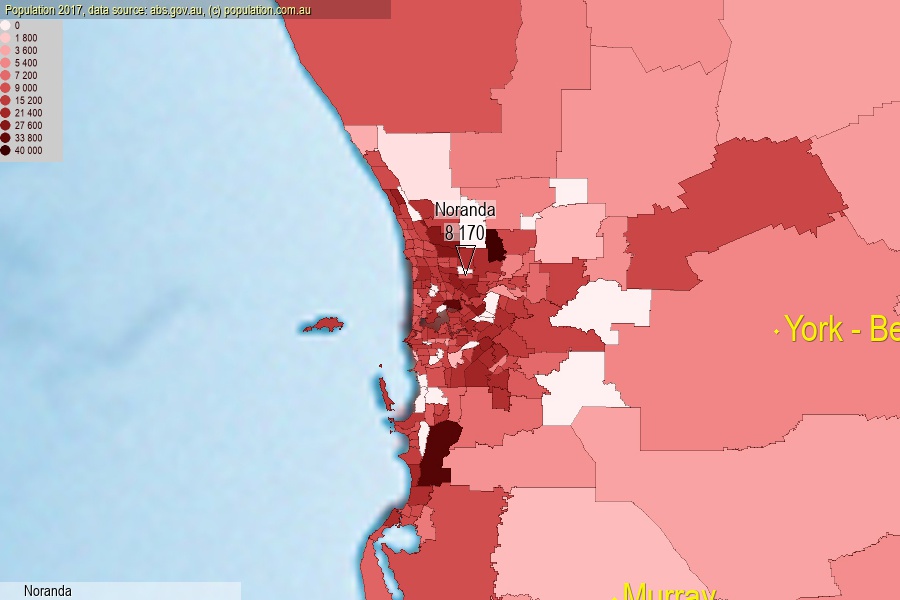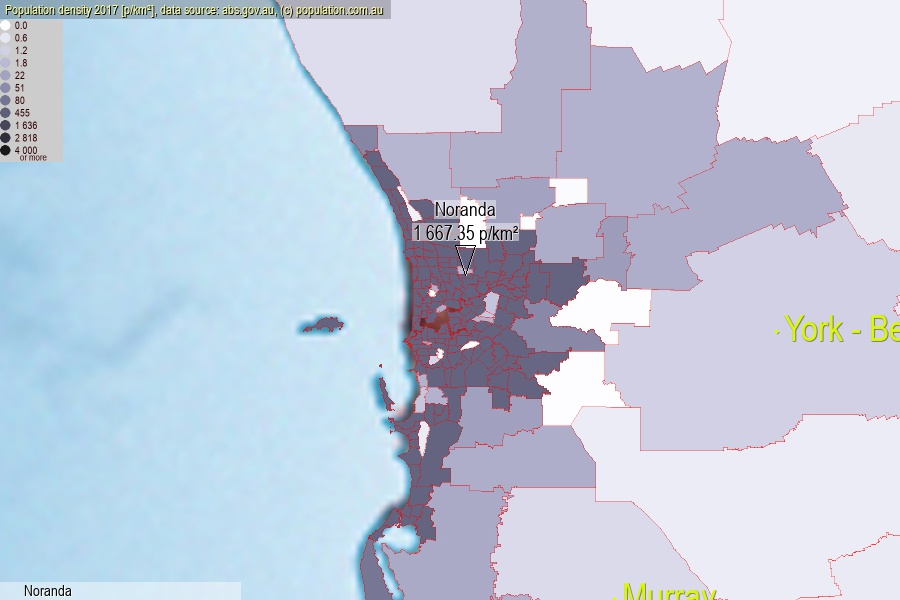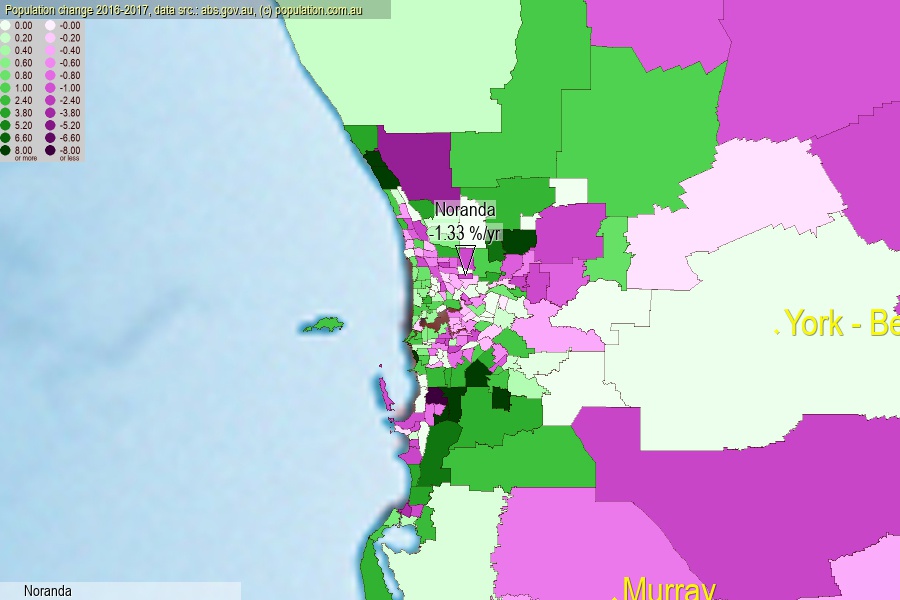 population.com.au
population.com.auLast official estimated population of Noranda (as Statistical Area Level 2) was 8 170 people (on 2017-06-30)[2]. This was 0.03% of total Australian population and 0.315% of WA population. Area of Noranda is 4.90 km², in this year population density was 1 667.35 p/km² . If population growth rate would be same as in period 2016-2017 (-1.33%/yr), Noranda population in 2025 would be 7 341. [0]



Click to enlarge. Noranda is located in the center of the images.
Population [people], population density [p./km²] and population change [%/year] [2]
View borders » (new window) [4]
[1991-1992] +0.10 %/Yr.
[1992-1993] -0.56 %/Yr.
[1993-1994] -0.66 %/Yr.
[1994-1995] -0.47 %/Yr.
[1995-1996] +0.32 %/Yr.
[1996-1997] -1.26 %/Yr.
[1997-1998] +0.12 %/Yr.
[1998-1999] -0.37 %/Yr.
[1999-2000] -0.68 %/Yr.
[2000-2001] -0.22 %/Yr.
[2001-2002] -1.41 %/Yr.
[2002-2003] -1.22 %/Yr.
[2003-2004] -0.39 %/Yr.
[2004-2005] -1.30 %/Yr.
[2005-2006] +0.75 %/Yr.
[2006-2007] +0.06 %/Yr.
[2007-2008] +0.08 %/Yr.
[2008-2009] +0.06 %/Yr.
[2009-2010] -0.12 %/Yr.
[2010-2011] +0.31 %/Yr.
[2011-2012] +1.61 %/Yr.
[2012-2013] -0.09 %/Yr.
[2013-2014] -1.29 %/Yr.
[2014-2015] -1.77 %/Yr.
[2015-2016] -2.28 %/Yr.
[2016-2017] -1.33 %/Yr.
[0] Calculated with linear interpolation from officially estimated population
[1] Read more about SA2 and Australian Statistical Geography Standard (ASGS) on abs.gov.au
[2] Population data from Australian Bureau of Statistics (Population and density: 2017; change: 2016-2017)
[3] Digital Boundaries: Australian Statistical Geography Standard (ASGS) 2016.
[4] Border coordinates are simplifyed using Ramer-Douglas-Peucker algorithm.